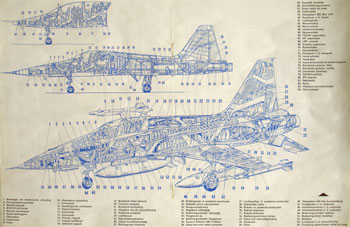Royal Netherlands AF (KLu)
[ Page 1 ]
page 2
page 3
page 4

![]()
The Northrop
F-5 was developed as a lightweight multi-mission aircraft capable of speeds
in the area of Mach 1.4. It was aimed at air forces that had no big budgets
available and the USAF did not really put in big orders for this plane,
only a dozen being evaluated in Vietnam. But the USAF did adopt the T-38
Talon trainer that was based on work on the F-5 as the world's first supersonic
trainer.
The F-5A prototype, the N-156, was ready for flight test in 1959. later on many orders came in from various nations like Canada, Greece, Iran, South Korea, Libya, Morocco, Netherlands, Norway, Philippines, Spain, Taiwan, Thailand, Turkey and South Vietnam.
Many F-5 were
delivered through the Military Assistance Program to various countries,
including NATO. Overall about 650 F-5As and 200 two-seat F-5B aircraft
were built.
( Note: Later
on, the F-5 was used as a starting point for the improved International
Fighter Aircraft (IFA) program. The result was the F-5E Tiger II. Compared
to the F-5A, it was lengthened and enlarged, with increased wing area with
and more sophisticated avionics.
Of the F-5, several variations were developed, based on specific air force specs of various countries. The NF-5 was developed for the Netherlands Air Force and was based on the Canadair CF-5. This F-5 version has two more powerfull engines and some extra equipment as compared to the usual F-5A.
The major external
characteristics of the Dutch NF-5 are:
- tailhook
below aft fuselage (later also used for F-5E type)
- two large
split air intake doors aft of main wing trailing edge in both sides fuselage
to provide extra air to engines (later also used for F-5E type)
- provision
to carry also the larger 275 gallon underwing fueltanks
- trailing
edge flap had an extra setting (8 degrees)
- other nose
wheel leg (that could be extended); this was to take-off with a B61 but
later on the extension of the leg was often fixed.
- different
cockpit main instrument panel layout
- slightly
larger intake than USAF F-5A for the more powerfull Canadian Orenda engines
(similar to CF-5)
![]()
This 1/32
scale F-5A model will be slightly adapted to get a Dutch AirForce NF-5A
as extensively used in the nineteen seventies and eigthies before the NF-5's
were replaced by the F-16's. In addition,you will need a F-5E 1/32 kit,
issued by Hasegawa and the same mould used by Revell.
Interested
in 1/72 scale? Check out my F-5 series models
here...

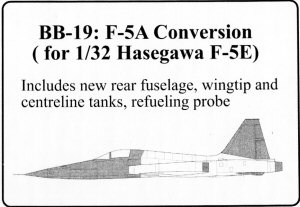
Belcher Bits issued a resin set for a F-5A conversion in 1/32 scale using Hasegawa 1/32 F-5E or same Revell kit.
The conversion requires modifications on mostly the F-5E kit wings and rear fuselage. It includes new rear fuselage, correct wing tip fuel tanks and centreline fuel tanks plus refueling probe. Also not forgotten are the F-5A instrument panel, intake fronts and other necessary odds and ends. The set includes also some simple Canadian decals. The smaller parts supplied are excellent, the large fuselage needs some extra work though. See www.belcherbits.com on how to order your set if you want one.
The Hasegawa
1/32 kit needed (Revell kit uses the same mould):
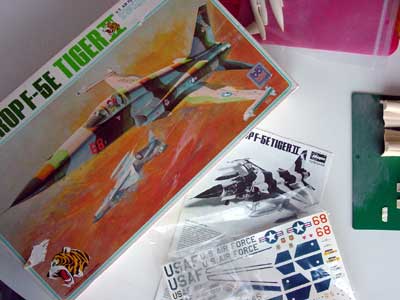
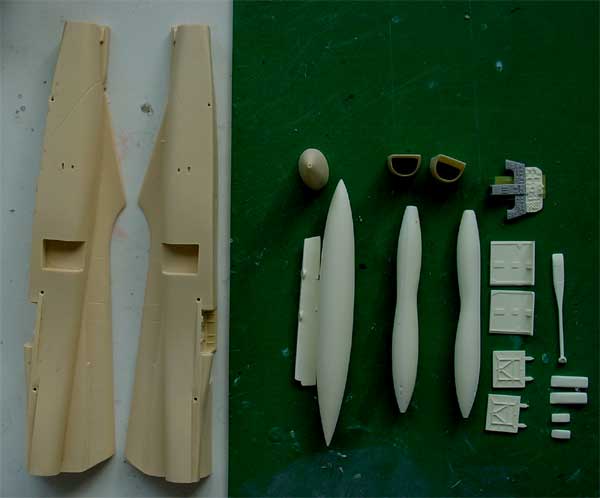
Also note the new tanks supplied.

When you look at the F-5 fuselage
(yellow) compared to the F-5E (dark grey) , you will see remarkable differences:
the shape, length and widths are completely different.
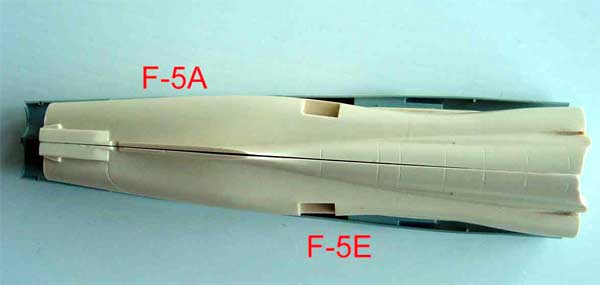
There is no way you could have converted
the Hasegawa fuselage to get a correct F-5 fuselage, so the Belcher set
is very usefull indeed. 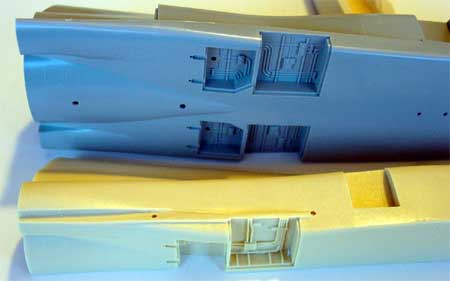

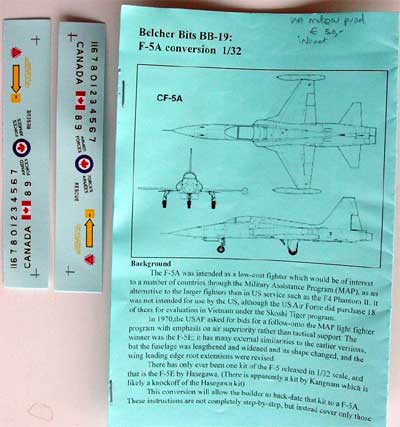
The provided Belcher Bits instructions tell you quite well how to do the conversion. Especially you need to do some work to modify the kit’s wings.
MAIN FUSELAGE
The forward fuselage of the F-5A
and cockpit section is very similar to the F-5E as supplied in the Hasegawa
kit. The Belcher Bits set provides for the rear of the fuselage two big
resin halves. There were some problems to alignment and filling and sanding
is needed. The intakes and exhaust are solid, and this is pitty as
they are very difficult to drill open. I used my household drill to drill
open the exhaust pipe holes, but still I could not really get good results
as the resin is very tough.
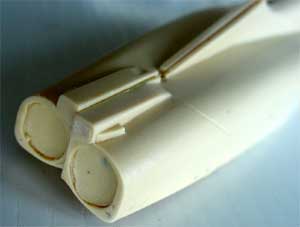
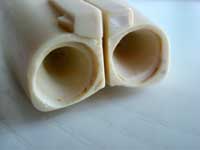
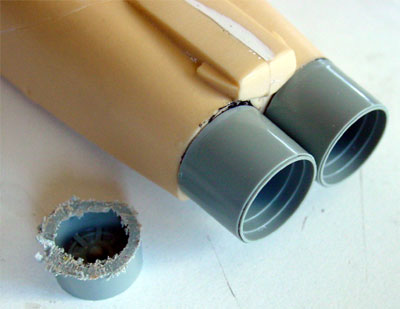
I gave up on opening the intake holes
as there would be a too big risk to damage the parts. I will use intake
covers later on instead. I used two component glue to glue the fuselage
halves.

After filling especially at the rear
end, I sanded the whole fuselage. 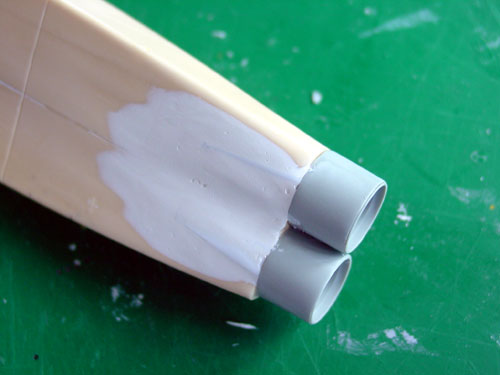
You will also need to do some rescribing
of the panel lines; this is again not easy as the resin is very tough.
Here you see on the left the CF-5A resin intake:
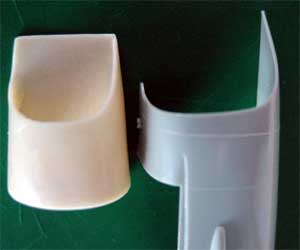
Note that this
intake is slightly larger as the orginal F-5A intake as the CF-5 and NF-5
use more powerfull Canadian Orenda engines. So for the NF-5, this Belcher
Bits set intake is correct.
NOTE: I left the resin intakes for assembly later on.
Next step now is to assemble the forward
fuselage and cockpit. You will see that the height between this forward
section and the rear resin fuselage are 2 mm different; so first
I removed a small portion at the top edges to prevent much work later on
but anyway later one some filling and sanding will still be needed here.
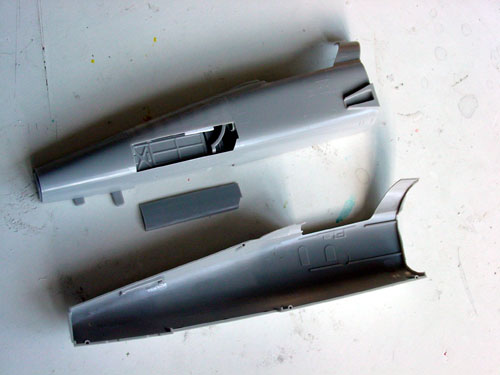
The cockpit area can be as detailed
as you want. (more on that later on). 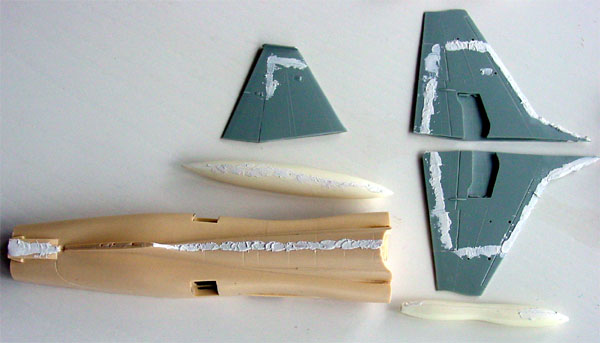

WING
The F-5 wing is quite simple compared
to the later F-5E wing as has straight edges. The modification is to remove
certain areas of the Hasegawa wing especially at the leading edge root
extensions. After that you need to sand a lot to get wing airfoil type
leading edges. I also recommend you to use small metal pins to add strength
to the wing-fuselage and stabilizer -fuselage joints.
The NF-5 "manoeuvring leading edge flaps" were simply suggested adding a straight inscribed panelline.
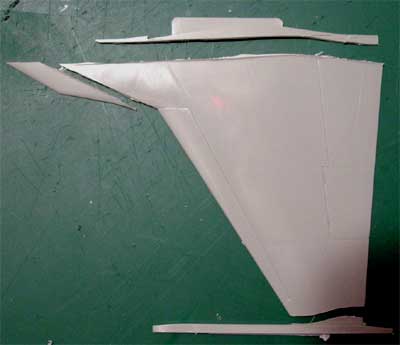
VERTICAL TAIL
Next step is to cutt off a part of
the vertical as indicated to fix it on the resin F-5 fuselage. This seems
simple, but you will end up with different thickness between the resin
root section and the plastic Hasegawa section. Filler is needed here. The
vertical tail shape of the kit is OK.
NOTE: Assembly of the vertical tail
will be done later.
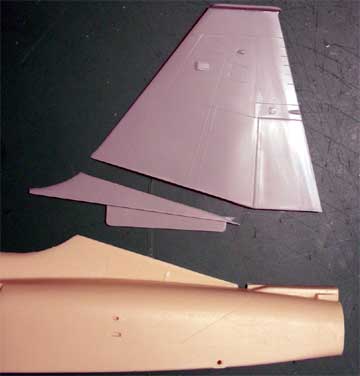
Various parts
As noted, the kit comes with specific
items needed for the F-5A. These parts are OK, such as the main gear doors,
other sized speed brakes, aft fuselage air inlets and another center line
fuel tank with its pylon. You also get the arrestor hook and even
some parts to make an aerial refueling probe as found on mostly Canadian
and American F-5A's (not on a Dutch NF-5 used). Some clean up with a X-acto
knife and some sandpaper on these parts is only necessary.
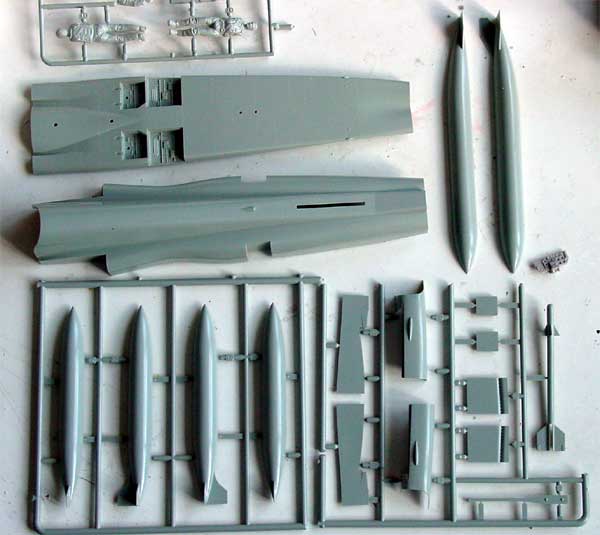
The unused
parts of the F-5E kit.
On to next NF-5 Page 2.....
References:
IPMS NL NF-5 Walkaround
http://www.nf5.nl
http://www.cybermodeler.com/aircraft/northrop/northrop.shtml
NF-5 video to see at YouTube...
Books:
De Northrop NF-5A in Nederland, C. van Gent, De Alk, Alkmaar 1992
IPMS The Netherlands magazines: MIP 1985/4, 1986/1, 2001/3

(c) Copyright Meindert "designer"/ All rights reserved. Your comments are welcomed by webmaster
Created this page
November 3, 2006;;
Updated February 7, 2016
